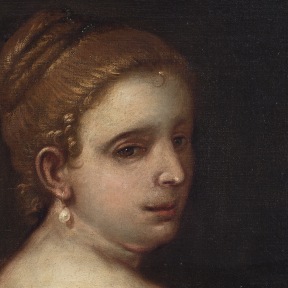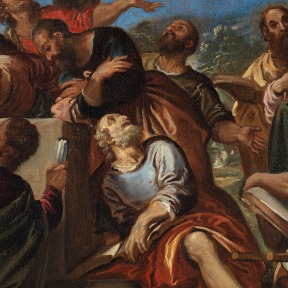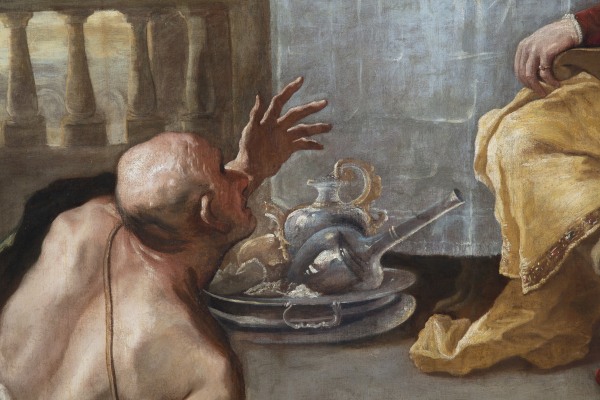-
Biography
Antonio Carneo (Concordia Sagittaria, Italy 1637 - Portogruaro, Italy 1692)
Born in Concordia Sagittaria in the province of Venice in 1637, Carneo spent his early years in Portogruaro, before moving to Cordovado, where his presence is documented between 1658 and 1667.
There is little information on his life and work, including his artistic training, which probably took place with select key figures in Venetian painting, such as Palma il Giovane and Padovanino, Tintoretto and Jacopo da Ponte, known as Bassano.
In 1667, he moved to Udine to a house owned by Count Leonardo Caiselli, who provided him with protection, room and board in exchange for his paintings.
Now a mature painter with a refined pictorial language, his work was dominated by chiaroscuro and a fascination for the marked faces of simple people, the general population, whose expressions were captured and emphasised with great skill, in the style of Caravaggio.
An established painter, Carneo attracted many private, public and ecclesiastical commissions, which allowed him to explore a broad variety of evolving references, pushing the boundaries of experimentation, making him one of the most prominent figures of the Venetian Baroque.
He spent the last years of his life in Portogruaro, where he died in 1692.
Photo UniCredit Group (Sebastiano Pellion di Persano)
-
Works
-
 Cristo e l’adultera, c.1650-1700View details
Cristo e l’adultera, c.1650-1700View details -
 Il Redentore, c.1650-1700View details
Il Redentore, c.1650-1700View details -
 La Sacra Famiglia, c.1650-1700View details
La Sacra Famiglia, c.1650-1700View details -
 Menade addormentata, c.1650-1700View details
Menade addormentata, c.1650-1700View details -
 Aracne tesse la tela (o l’Indovina), 1660View details
Aracne tesse la tela (o l’Indovina), 1660View details -
 La buona ventura (La seduzione), 1660View details
La buona ventura (La seduzione), 1660View details -
 Vecchia con conocchia e giovane con spighe, 1660View details
Vecchia con conocchia e giovane con spighe, 1660View details
-
Antonio Carneo: Italian, 1637-1692
An important Italian painter from the Friulian and Venetian area during the second half of the seventeenth century; he painted allegorical, mythological and religious subjects in the style of Caravaggio.Join our mailing list
* denotes required fields
In order to respond to your enquiry, we will process the personal data you have supplied in accordance with our privacy policy.















